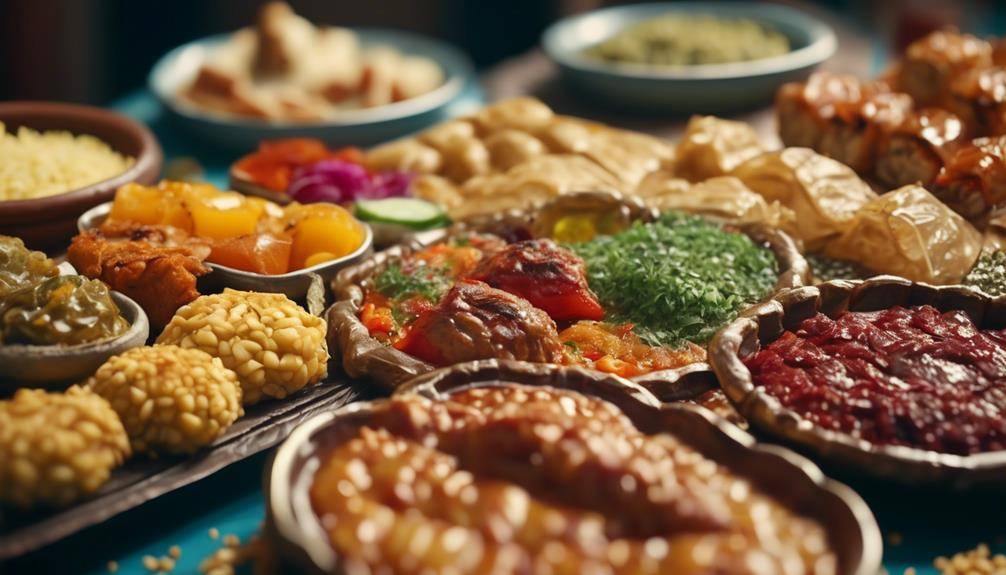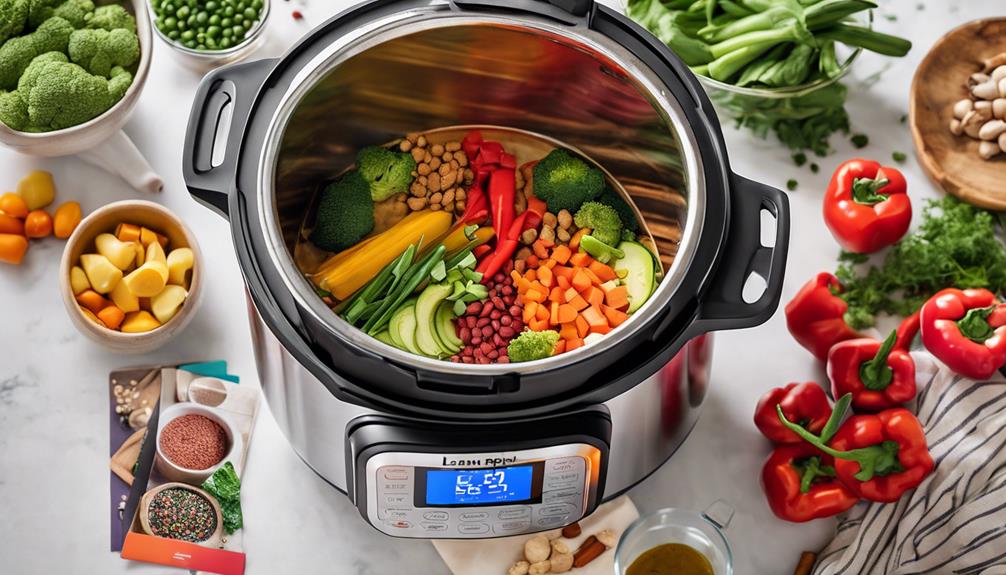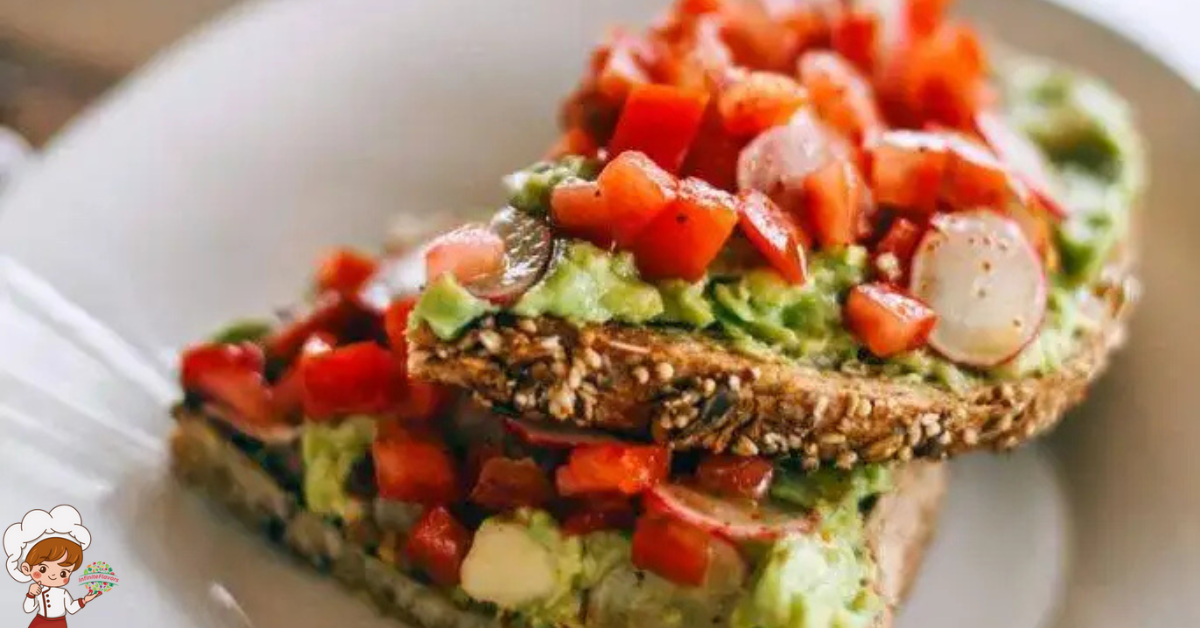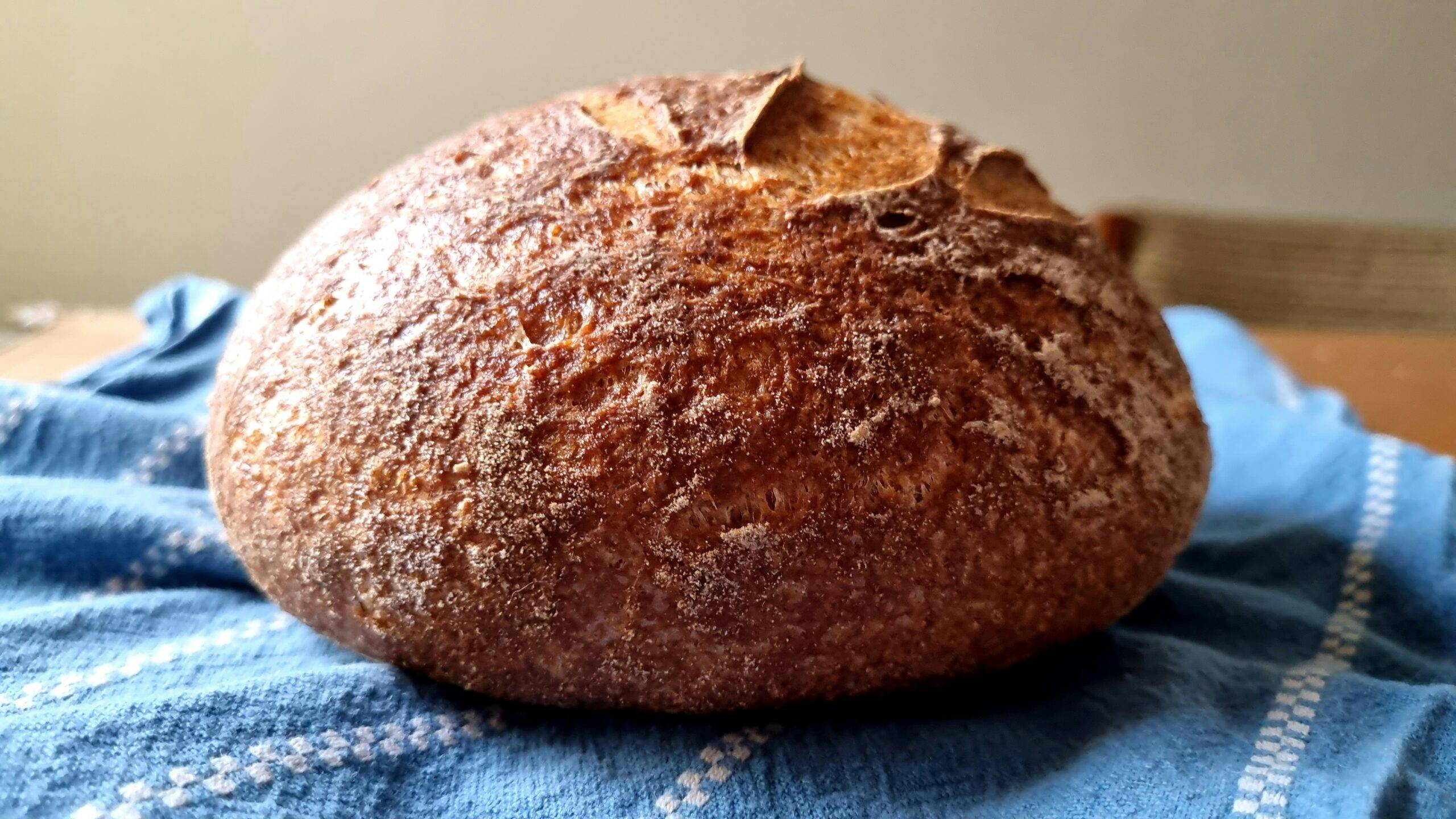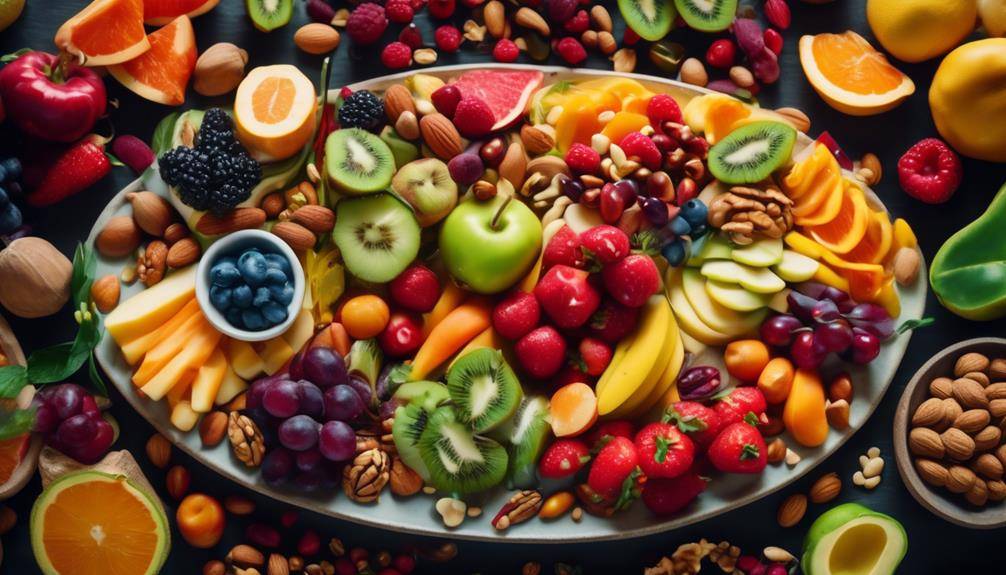Popular Indian Desserts Made With Traditional Ingredients
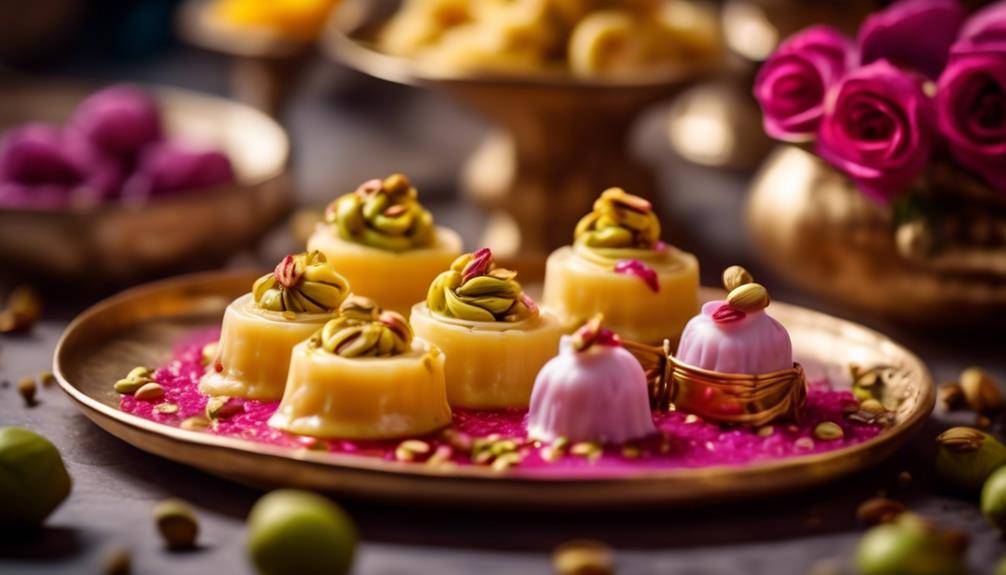
Embark on a delectable journey through the world of Indian Desserts Made With Traditional ingredients come together to create a symphony of flavors that dance upon your taste buds. Like a tapestry woven with the finest threads, these desserts showcase the rich cultural heritage and culinary traditions of India.
From the creamy indulgence of Kheer to the syrup-soaked delights of Gulab Jamun, each dessert is a delightful testament to the art of sweet-making. But the journey does not stop there, for there are crispy and sweet spirals of Jalebi, soft and spongy Rasgulla, decadent Carrot Gajar Halwa, and fluffy pancakes swimming in sweet syrup known as Malpua. So, join us as we uncover the secrets and stories behind these tantalizing treats, leaving you eager to savor each and every bite.
Kheer: Creamy Rice Pudding
To indulge in the rich and velvety delight of Kheer, a traditional Indian dessert, allow the creamy rice pudding to transport you to the vibrant and diverse culinary world of India. Kheer, also known as Indian rice pudding, is a classic sweet dish that is enjoyed across the country. It is made by simmering rice in milk and sweetening it with sugar or condensed milk. The result is a luscious and creamy dessert that is often flavored with cardamom, saffron, and nuts.
There are numerous kheer recipes and variations that vary from region to region in India. In the north, kheer is typically made with basmati rice, milk, and sugar. It is flavored with cardamom and garnished with slivered almonds and pistachios. In the south, a popular variation called paal payasam is made with a combination of rice, jaggery (unrefined cane sugar), and coconut milk. This gives the kheer a distinct flavor and a slightly darker color.
Another variation of kheer is known as phirni, which is made by grinding rice into a coarse powder and then cooking it with milk and sugar. It is often flavored with rose water or kewra essence and garnished with chopped nuts. Some recipes also add a pinch of saffron to give it a beautiful yellow hue.
Kheer is not only enjoyed as a dessert but is also offered as a prasad (religious offering) in temples and during festive occasions. It is a versatile dessert that can be served warm or chilled, making it perfect for any season.
Gulab Jamun: Syrup-Soaked Delights
Immerse yourself in the delectable world of Indian desserts as we explore the next syrup-soaked delight: Gulab Jamun. This popular sweet treat is a favorite across India and is loved for its soft and spongy texture, and its indulgent syrupy flavor.
Gulab Jamun comes in various variations and regional specialties, each with its unique twist. While the basic ingredients remain the same—khoya (reduced milk solids), flour, and sugar—the preparation methods and additional ingredients can vary. For instance, some recipes call for the addition of cardamom powder or saffron strands to enhance the flavor. In certain regions, the gulab jamun dough is made with paneer (cottage cheese) instead of khoya, resulting in a slightly different texture and taste.
When it comes to serving gulab jamun, there are several popular accompaniments and serving suggestions that can elevate your dessert experience. One classic way to enjoy gulab jamun is by serving it warm, soaked in a fragrant rose-flavored sugar syrup. The warm and soft gulab jamun melts in your mouth, releasing its sweet essence with each bite. Another popular serving suggestion is to pair gulab jamun with a scoop of vanilla ice cream, creating a delightful combination of hot and cold flavors and textures.
Jalebi: Crispy and Sweet Spirals
Get ready to indulge in the crispy and sweet spirals of Jalebi, a beloved Indian dessert that will tantalize your taste buds with its unique texture and delightful flavors. Jalebi, also known as Zulbia, is a popular dessert that is made by deep-frying a fermented batter of all-purpose flour and yogurt. The batter is then soaked in a sugar syrup, resulting in a sticky and syrupy treat. Here are some discussion ideas to delve deeper into the world of Jalebi:
- Jalebi making techniques: Jalebi making is an art that requires precision and skill. The batter is prepared by mixing all-purpose flour, yogurt, and water to form a thick, smooth consistency. The mixture is then left to ferment for a few hours, allowing the flavors to develop and the batter to become airy. The fermented batter is then poured into a piping bag and piped directly into hot oil in a circular motion, creating the signature spiral shape. The Jalebis are deep-fried until golden brown and crispy, then soaked in sugar syrup to absorb the sweetness.
- Different regional variations of Jalebi: Jalebi is a dessert that varies in its preparation and presentation across different regions of India. For example, in North India, Jalebi is often bigger in size and has a thicker consistency, while in South India, it is smaller and thinner. In Rajasthan, Jalebi is typically served with rabri, a sweet, condensed milk-based dessert. In Gujarat, Jalebi is commonly enjoyed with fafda, a savory snack made from chickpea flour. The variations in size, shape, and accompaniments add to the diversity and richness of this beloved dessert.
Jalebi is not just a dessert but a cultural symbol that represents the sweet indulgence and rich culinary traditions of India. So, next time you crave something crispy and sweet, treat yourself to the irresistible delights of Jalebi and experience the magic of Indian desserts.
Rasgulla: Soft and Spongy Delicacy
As you explore the world of Indian desserts, it’s time to delve into the subtopic of ‘Rasgulla: Soft and Spongy Delicacy’. Originating from the eastern state of West Bengal, Rasgulla has a rich history that dates back centuries. This traditional sweet is made by curdling milk and then kneading it into small balls, which are then cooked in a sugar syrup. Variations of Rasgulla recipes can be found throughout India, each offering a unique twist to this beloved dessert.
Rasgulla’s Origins and History
Rasgulla, a soft and spongy delicacy, holds a significant place in the rich cultural history of Indian desserts. Its origins can be traced back to the state of Odisha in eastern India. Here are four fascinating facts about the origins and history of rasgulla:
- Cultural Significance: Rasgulla is not just a dessert; it is a symbol of celebration and joy in Indian culture. It is often served during festivals, weddings, and special occasions, adding sweetness to the festivities.
- Traditional Recipe: The traditional rasgulla recipe involves kneading chenna (curdled milk) into soft balls, which are then cooked in sugar syrup until they become light and spongy. The process requires skill and precision to achieve the perfect texture.
- Inventor of Rasgulla: Nobin Chandra Das, a renowned confectioner from Kolkata, is credited with inventing the modern-day rasgulla in the late 19th century. His creation gained immense popularity and became a signature dessert of Bengal.
- Global Recognition: Rasgulla’s fame has transcended borders, and it is now enjoyed in various countries around the world. It has become a popular dessert in Bangladesh, Nepal, Pakistan, and even in countries with large Indian diasporas, such as the United States and the United Kingdom.
Rasgulla’s origins and cultural significance make it a beloved dessert that continues to delight people both in India and abroad.
Traditional Rasgulla-Making Process
To master the art of creating the beloved Indian dessert known as rasgulla, you must carefully curdle milk and skillfully transform it into soft and spongy balls that are then cooked in a sweet sugar syrup. The traditional rasgulla-making process is a delicate and intricate one that requires precision and patience. The first step involves curdling the milk by adding lemon juice or vinegar to it, which causes the milk solids to separate from the whey. The solids are then kneaded to form a smooth dough, which is divided into small balls.
These balls are then cooked in a sugar syrup until they become soft and spongy. The syrup absorbs into the rasgullas, giving them a delectably sweet flavor. Traditional rasgulla-making techniques vary across different regions of India, with some adding saffron or cardamom for additional flavor. In addition, there are also different types of rasgulla fillings, such as pistachio or coconut, which add a unique twist to this classic dessert. The result is a melt-in-your-mouth delicacy that is enjoyed by people of all ages.
Variations of Rasgulla Recipes
With a rich cultural history and a variety of regional influences, the world of rasgulla recipes offers a delightful array of variations to satisfy every sweet tooth. Here are four tantalizing varieties of rasgulla recipes that showcase different cooking techniques and flavors:
- Kesar Rasgulla: This variation adds a touch of saffron to the classic rasgulla recipe, giving it a beautiful golden color and a subtle floral aroma.
- Chocolate Rasgulla: For all the chocolate lovers out there, this variation combines the softness of rasgulla with the rich and indulgent flavor of chocolate. It’s a perfect fusion of traditional and modern flavors.
- Coconut Rasgulla: This variation incorporates grated coconut into the rasgulla mixture, adding a hint of tropical sweetness and a delightful texture to the soft and spongy dessert.
- Rose Rasgulla: Infused with the essence of roses, this variation offers a fragrant twist to the traditional rasgulla. The delicate floral notes complement the sweetness of the dessert, creating a truly delightful treat.
These variations of rasgulla recipes highlight the versatility and creativity in Indian desserts, making them a must-try for any sweet lover.
Gajar Halwa: Decadent Carrot Dessert
Indulge in the lusciousness of Gajar Halwa, a rich and aromatic Indian dessert that captures the essence of traditional flavors and cultural heritage. This delectable treat is made with grated carrots, milk, sugar, ghee, and a variety of nuts and spices. Gajar Halwa has gained immense popularity not only in India but also worldwide due to its unique taste and texture.
One of the reasons for Gajar Halwa’s popularity is its versatility when it comes to serving. Traditionally, it is served warm, straight from the stove, garnished with chopped nuts like almonds and pistachios. The warm and gooey texture of the halwa is perfectly complemented by the crunch of the nuts, creating a delightful sensory experience. Another way to serve Gajar Halwa is by cooling it down and serving it chilled. The cold halwa provides a refreshing contrast to the richness of the dessert and is often accompanied by a dollop of vanilla ice cream or a sprinkle of cardamom powder.
In recent years, chefs and home cooks have experimented with different ways to serve Gajar Halwa. Some have transformed it into a filling for pastries or used it as a topping for pancakes and waffles. Others have incorporated it into milkshakes or layered it with cream and crumbs to create a visually stunning trifle. These creative variations add a modern twist to the traditional dessert, making it even more appealing to a global audience.
Gajar Halwa is not just a dessert; it is a celebration of the rich culinary heritage of India. Its popularity worldwide and the various ways in which it can be served reflect the adaptability and creativity of Indian cuisine. So go ahead, savor the decadence of Gajar Halwa and immerse yourself in the flavors and traditions of India.
Malpua: Fluffy Pancakes in Sweet Syrup
Malpua, a popular Indian dessert, is a delectable treat consisting of fluffy pancakes soaked in sweet syrup. This delightful dessert has a rich cultural significance and is enjoyed by people of all ages across India. Here are four intriguing aspects of Malpua that will pique your interest:
- Rasgulla’s popularity: While rasgulla is a famous Bengali sweet, it is interesting to note that Malpua is equally loved in the region. In fact, it is often served alongside rasgulla during festive occasions and celebrations. The combination of the soft, spongy texture of rasgulla and the crispy yet syrup-soaked Malpua creates a harmonious blend of flavors and textures.
- Regional variations: Just like many other Indian desserts, Malpua also has regional variations. In Rajasthan, the Malpua batter is made with a mix of flour, semolina, and mashed bananas or coconut. It is then deep-fried and dipped in a sugar syrup infused with cardamom and saffron. In Uttar Pradesh, Malpua is prepared with a batter made from flour, milk, and fennel seeds. It is fried until golden brown and served with rabri, a thickened sweetened milk.
- Festive significance: Malpua holds a significant place in Indian festivals, especially during Holi and Diwali. It is believed that offering Malpua to deities during these auspicious occasions brings prosperity and good fortune. The sweet aroma of the freshly prepared Malpua fills the air, adding to the festive spirit and joy.
- Culinary expertise: Making perfect Malpua requires skill and precision. The batter needs to be the right consistency, and the pancakes should be fried until golden brown. The syrup should be of the right thickness and infused with fragrant spices. Each step requires attention to detail and culinary expertise to achieve the perfect Malpua.
Malpua’s popularity, along with its regional variations and cultural significance, makes it a truly unique and cherished dessert in Indian cuisine. So, next time you crave something sweet, indulge in the fluffy goodness of Malpua and experience the rich flavors of India.
Frequently Asked Questions: Indian Desserts Made With Traditional
What Are the Key Ingredients Used in Making Kheer?
To make kheer, the key ingredients used are rice, milk, sugar, and cardamom. These traditional elements create a rich and creamy dessert that is beloved in Indian cuisine.
How Long Does It Take to Prepare Gulab Jamun?
To make gulab jamun from scratch, you’ll need to mix the dough with khoya, flour, and cardamom. Shape it into balls and fry until golden brown. Then, soak in sugar syrup for a while. Tips for perfect texture include using fresh ingredients and ensuring the dough is soft but not sticky.
Can Jalebi Be Made Without Deep Frying?
You can make jalebi without deep frying by using alternative cooking methods. This can be a healthier option for those who want to enjoy this traditional Indian dessert while reducing the oil content.
Are There Any Variations of Rasgulla Available?
There are several variations of rasgulla available, each with its own unique twist. From chocolate rasgulla to mango rasgulla, these quick and easy Indian desserts offer a delightful fusion of flavors.
Is Gajar Halwa Typically Served Warm or Cold?
Gajar halwa can be served both warm and cold, depending on personal preference. It is traditionally made with grated carrots, milk, sugar, and ghee. To make a perfect gajar halwa at home, follow these tips.
Conclusion
In conclusion, Indian desserts made with traditional ingredients offer a delightful and rich culinary experience. From the creamy rice pudding of Kheer to the syrup-soaked delights of Gulab Jamun, each dessert carries a unique cultural significance. The crispy and sweet spirals of Jalebi and the soft and spongy delicacy of Rasgulla showcase the diversity of Indian sweets. Lastly, the decadent carrot dessert of Gajar Halwa and the fluffy pancakes in sweet syrup, Malpua, add further depth to the vibrant palette of Indian desserts.



